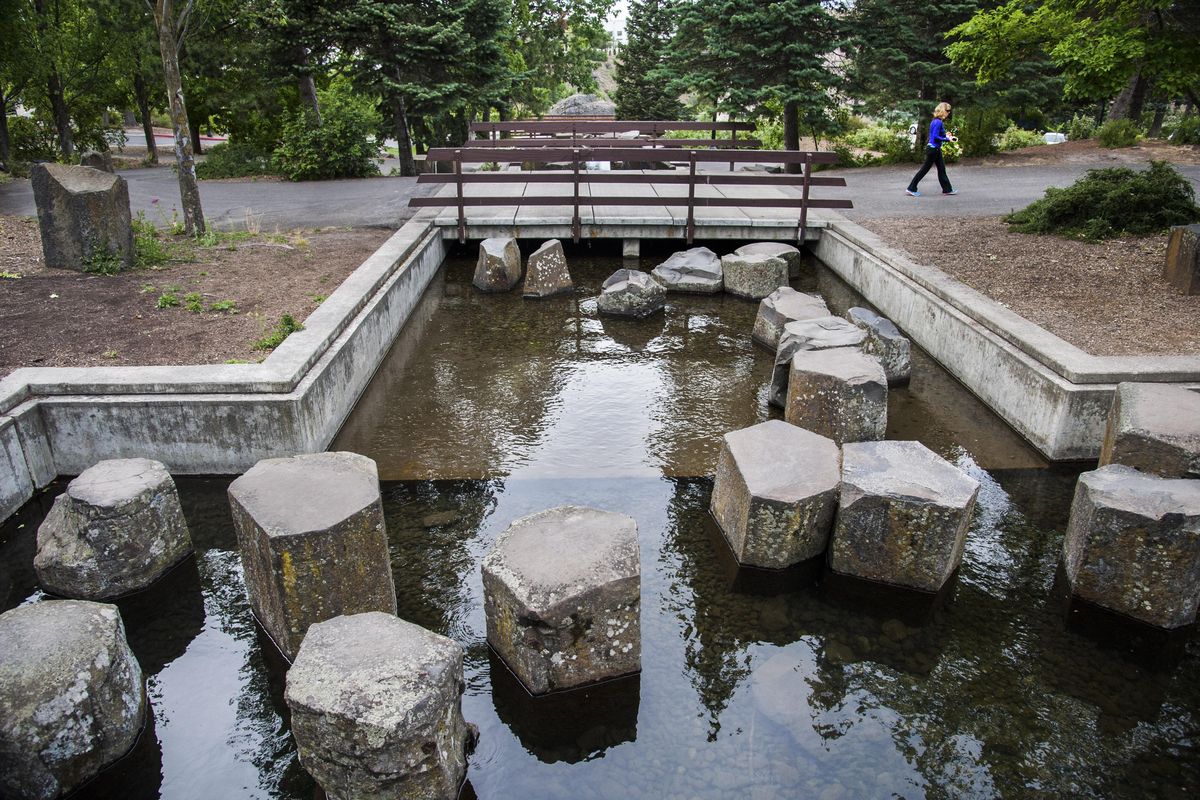Army Corps requires city of Spokane to preserve Expo ’74 history in Riverfront Park

The U.S. Army Corps of Engineers is requiring the Spokane parks department to get more serious about preserving the history of Expo ’74.
The city is in the midst of planning a $64 million voter-approved renovation of the park, which contains more than a score of Expo-related sites.
As part of the park renovation, the city is seeking to replace the Howard Street foot bridge over the south channel of the Spokane River.
The bridge is fenced off to pedestrians on the middle part of the span and needs replacement at a cost of about $6.7 million. The south channel bridge is adjacent to the Looff Carrousel and the Rotary Fountain.
The city needs a permit from the corps to enter the river and surrounding embankments to demolish the old bridge and replace it with a new bridge that would be reoriented a few degrees clockwise to better connect it with the pavilion and a new central plaza on Havermale Island.
Riverfront Park planners have been aware of the need to preserve Expo sites, but the corps has focused the city’s attention through a formal memorandum of agreement which places preservation conditions on the permit and bridge replacement.
Under the memorandum, “The city will complete a historic context statement and inventory of the Expo ’74 fairgrounds.”
Spokane City Councilwoman Candace Mumm said she supports more intensive preservation efforts as required by the corps. Mumm, a member of the Park Board, supported the board’s approval of the memorandum last month.
“The Expo ’74 site has a lot of memories,” she said. “It’s a big piece of our history.”
The work will involve sites outside of the main fairgrounds and objects that may have been removed from the park but are still in storage, the memorandum says.
The preservation and planning must involve the city-county historic preservation office and Spokane Preservation Advocates, a nonprofit community group, the corps said.
Megan Duvall, the city-county historic preservation officer, said some inventory work already has been completed and the city is eager to comply with the corps’ preservation requirements.
A second step will involve creation of a historic preservation plan, which will “shape the City’s decision-making process regarding ongoing planning, preservation, and management of cultural and historic properties within the park boundaries,” the memorandum said.
The corps also is forcing the city to revise preliminary plans to redevelop the Theme Stream, which is a water sculpture that uses columnar basalt to allow water to gently fall down a channel made for Expo. The Theme Stream has a meandering pathway crossing through it.
Consultants had recommended revising the Theme Stream to allow easier access to the water, but the corps opposed that idea.
“The city will implement historic rehabilitation at the national register-eligible Theme Stream …” the memorandum said.
The corps in the memorandum points out that the corps has been joined by the state Department of Archaeology & Historic Preservation in determining that the Expo ’74 grounds are eligible to be a national historic district.
The corps also said it is required under federal law to follow the requirements of the National Historic Preservation Act.
Parks Director Leroy Eadie said the city is willing to comply.
“We want to tell the story and history of Expo ’74 in the new design of the park,” Eadie said.
He said the city would like to restore butterfly sculptures from Expo to Riverfront Park.
The city has two years to complete the historic preservation plans.
Work on renovating the Havermale Island section of the park, which has the greatest density of Expo sites, will occur in 2018, giving the city time to plan for preservation as it improves the park, Eadie said.
Locations such as the British Columbia amphitheater, totem poles, bridges, sculptures, riverside steps and seating would all become a focus for preservation.
The historic Great Northern Railway Clocktower is a landmark dating back to 1902.
Professor Larry Cebula at Eastern Washington University said that Riverfront Park has a concentration of historic sites, including Native American sites.
“Riverfront Park has some of the most historic sites in Spokane,” he said.
Construction of the new bridge will begin with demolition starting late this summer with work continuing until the fall of 2017.
The new bridge will have an upgraded 18-inch water main.
The project is being financed with park improvement bonds and water utility money.